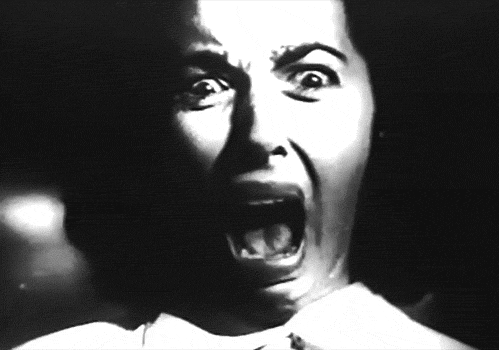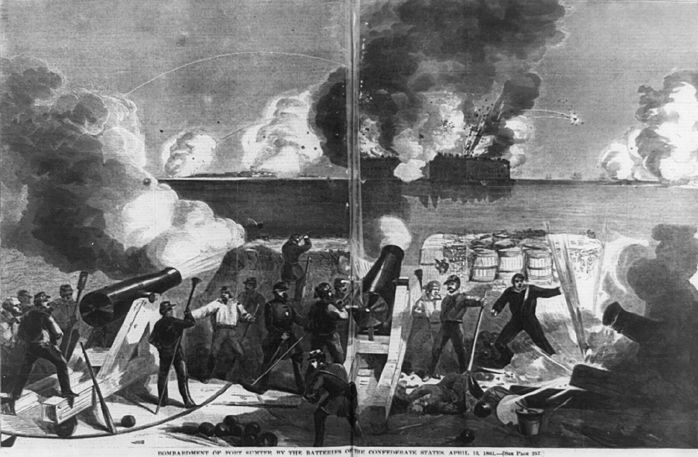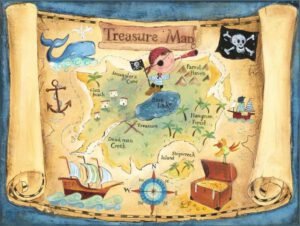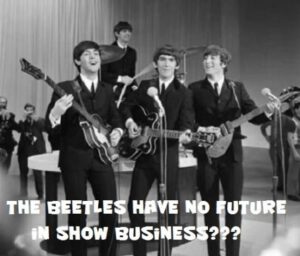Now it’s time for our list of firsts in history. There has to be a first in everything, right? From the first drivers licence, to the first DUI, someone has to hold the distinction of being the first. Sometimes being first can be a treasure, something worth admiration, but every now and then being first at something isn’t what you would exactly want it to be. So with this list we have decided to give you a mix of the good, bad and the ugly of the firsts in history.
1 First Olympic Drug Suspension Was For Drinking Alcohol
Leading our dubious list of firsts in history is the fool who became the holder of first official drug cheat at the Olympics.
Believe it or not, the very first Olympic drug suspension was for using the banned substance, alcohol. It may seem quite ridiculous to think that a drug that is designed to ultimately make us drunk can possible enhance performance, but this was precisely the case in the 1969 Mexico Olympics.
We are well aware of the effects of alcohol on our bodies. One or two drinks seldom causes any harm, but when you have more than that the problems can really begin to show. As you drink more your judgement becomes clouded, your dexterity begins to fail you, and you become unsteady on your feet. In short you become a mess. The internet is filled with photos and videos of the overly intoxicated. To the viewer it provides a little entertainment, provided we aren’t the subject being exploited. So in short, it rarely offers any assistance to us whatsoever.
But, and here’s the thing. Alcohol is known to calm the nerves when used in moderation. In times long gone by, doctors used to prescribe patients a shot or two when they seemed nervous or anxious. For mild cases it did the trick. This is the basis for the first Olympic drug suspension. It calmed the nerves of the elite athlete.
What sport could possibly be affected so much that calm nerves, and alcohol, could possibly provide an enhancement? Well, you may have stumbled across an article that we have explaining why alcohol is a banned substance in shooting. This was part of the event that saw the first Olympic drug suspension.
In the 1960 Olympic games, a road cyclist died while competing. A coroners inquest determined that he was under the influence of amphetamines, which caused him to lose consciousness. Following this tragedy the world recognised that there was a problem with drug use in sport, and acted to stamp it out. There was only one problem. Drug detection methods and techniques were in their infancy. Perhaps one of the easiest of banned performance enhancers to detect was alcohol.
So it began. Swedish pentathlete Hans-Gunnar Liljenwall drank two beers before the pistol shoot to calm his nerves. As we now know, doing such a thing was against the rules and regarded as cheating. He and his team were forced to return their bronze medals, and Liljenwall has the dubious distinction of becoming the first Olympic drug suspension athlete.
SOURCES
2 The First Television Broadcast That Could Reach Space Aliens Is Hitler
Ever since the very first radio transmission we have been broadcasting into the heavens. However most of these early transmissions were of very low strength and are not really capable of reaching interstellar beings. Unlike today where there are millions of transmissions into space every day, in our transmitting infancy there were very few. So I guess you are wondering what the first television broad to reach space aliens could be? It really is a pity because they could base their entire knowledge and understanding of the human race on this first transmission. It could very well be Hitler’s broadcast during the Nuremberg rallies.
There is, however, one saving grace. The chances of an alien race actually being able to decipher the broadcast are slim. NASA has recently been transmitting Beetles music to Polaris, the North star, and delivering it with a lot of power. For any alien to get this signal they must have a receiving antennae 11.27 kilometres (7 miles) wide just to even know it is there. If they want to listen to the music they would have to increase it to 804 kilometres (500 miles). The broadcast by Hitler was nowhere near as powerful.
The reason the TV signals can reach distant aliens is because the Earth is round. The radio transmissions travel in waves, but in a straight direction. So even though Earth is round, they transmit off the surface of the Earth not far after they leave the transmission tower.
So there it is, unfortunately. The first tv broadcast to reach space aliens could be Hitler, but let’s all hope no extraterrestrial beings don’t judge us by that one person.
SOURCE
3 Pablo Picasso’s First Words Were Pencil
Did you know that Pablo Picasso’s first words were pencil? It appears to be true as the one who provided the amazing information was none other than his mother. But it shouldn’t surprise us really. Some people are born with a distinct skill almost ingrained into the fabric of the entire being. It’s as though it is a part of their entire life.
One of those distinct people is Pablo Picasso. According to the mother of Pablo Picasso, María Picasso y López, his first words were piz, piz, a shortening of the word lápiz ,which is Spanish for pencil. So you see, Picasso’s first words really were pencil.
Now you know what Picasso’s first word was, now you should read why Picasso burned his paintings early in his life.
SOURCE
4 Disney’s First Character Was Oswald The Lucky Rabbit
Walt Disney, the founder of Disney, got his break with a little mouse called Mickey Mouse. Mickey Mouse has become the most popular and successful cartoon character in history. But it may have never been. Prior to Mickey Mouse, Walt Disney had designed another character, for another studio. Walt Disney’s first character was called Oswald the Lucky Rabbit.
Disney’s first character – Oswald the Lucky Rabbit
Disney’s first character was designed in partnership with Ub Iwerks while they were both employees of Universal Pictures. Oswald was one of the first cartoon characters to have a personality. They chose to make him a rabbit as there were already several cats, such as Felix and Krazy Kat, and they wanted to go in a different direction and make the character stand out. While his name was decided by Universal drawing his name from a hat.
It wasn’t all smooth sailing for Disney either. His first attempt with Oswald, Poop Papa was rejected by Universal. The second attemt turned out to be a success, in fact the biggest cartoon success up to that date. But things were to become a lot worse for Disney and his first character.
In 1928, a year after he designed Oswald, Disney asked the producer, Charles Mintz for a more profitable contract. However, they were not on the same page and Mintz wanted Disney to take a 20 percent cut in pay. While nearly all of the animators decided to stay with Universal, Disney and Iwerks decided to leave, and in doing so they left behind the character they had designed.
That decision turned out to be the best they ever made. They same year Disney was on a train when he came up with an idea for a new character, Mickey Mouse, from a tame mouse at his desk at Laugh-O-Gram Studio in Kansas City, Missouri. The reality though is probably much simpler. If you take the nose and ears of Oswald and make them shorter and rounder, the end result is something very close to Mickey Mouse.
So now we know who Disney’s first character was, but was Steam Boat Mickey the first Mickey Mouse film to be filmed? I’m afraid not. Although it was the first Mickey Mouse film Disney released, it was not his first Mickey Mouse film made. The first Mickey Mouse film ever made was called Plane Crazy, which was released in 1929, a year after Steam Boat Mickey. Remember Poor Papa that Disney made for his Oswald Character? Well, he reused the script and released it with a reworked title in 1932 called Mickey’s Nightmare.
In 2006, Oswald came back into Disney ownership with a deal between Disney and NBC Universal. He made his video game debut with Disney’s Epic Mickey 2, The Power of Two.
SOURCE
5 Orange, Color or Fruit, Which Came First?
Many people have often wondered this very question, but I bet fewer have dared to ask it. Orange, color of fruit, which came first? We can definitively tell you that the color was named after the fruit. How do we know this? Read on and find out.
Which orange came first, the color or the fruit, and why?
Like many words in English, they have had a bit of a journey across, time, culture and land. A lot of the words in English have their origins in other languages. For example, before the Norman conquest of England many meats were actually named after the animal of which it came from. Meat from a pig was called pig, meat from a cow was called cow and so on. The Normans brought with them the French words for the animal and it was adopted into the English language. It would become the English animal and the French meat. Pig animal, pork meat, Cow animal, beef mean, and so on. Orange as a color has a similar, but longer adaption into English. The word orange comes from the old French orenge, which in turn came from the old term for the fruit pomme d’orenge. Pomme d’orenge came from the Arabic naranj which was derived from the sanskrit naranga, all named for the fruit. We told you it was a journey over land, culture and time.
Orange fruit came before the color, what was the color called before orange?
The first recorded use of the word orange in English as a color was in a will in 1512. That will is now filed with the Public Records Office. I bet you can’t guess what orange was called before the introduction of orange as the word for the color? Orange used to be called ġeolurēad, which literally translates into yellow-red.
SOURCE
6 The First Refrigerator Faced A Smear Campaign
In the modern home it has become just another piece of must have appliances, alongside the stove, lighting and kitchen sink. We are of course talking about the refrigerator. But it, along with its cousins such as ice makers and air conditioners, it nearly never made it into widespread use. It would be unthinkable today, but there was a time when the humble refrigerator was considered immoral.
The very first refrigeration machine received its US patent in 1851. It was the brainchild of Dr John Gorrie, a physician from Florida, who had four years earlier developed the very first ice making and air chilling machine. The contraption Dr Gorrie had developed was the culmination of five years work. He had used it for years in his infirmary to make his fever patients more comfortable. You are probably wondering what was used before mechanical refrigeration, and why his invention faced a smear campaign.
Prior to the first refrigerator all ice had to be shipped to warmer climates from the north. But even this was only a relatively new innovation. Prior to ice shipping there was no way to cool anything in the warmer climates. If you wanted a glass of milk or a glass of wine, it was drunk at room temperature, that is unless you could afford a cellar, of which most ordinary people could not afford. That is what made ice shipments such a commercial success. The ability to deliver, on a regular daily basis, large amounts of ice for the cooling of just about anything. Men were becoming rich, and people finding work. This was the industry that ran a smear campaign against the first refrigeration machine.
Dr Gorrie found several investors, one a major backer, and a factory willing to produce his new cooling contraption. Within a year of his patent his major backer had died, and following a smear campaign from the so-called Ice King, Frederic Tudor, he fell on hard times. Tudor had made a fortune shipping ice worldwide. He had a monopoly on the business for decades and had made headlines when he had shipped 180 tonnes of ice from New England to Calcutta in 1833. The refrigeration machine had also faced criticism and ridicule in the press, and Dr Gorrie assumed that Tudor was behind it.
Dr Gorrie died in 1855 at the age of 51 with his invention failing and his other invention for an air conditioner never receiving a patent. Dr Gorrie said he believed the world was not yet ready for his inventions.
SOURCE
7 The First Fatal Car Accident Victim Died After Falling Out Of The Car
We told you that not everything in this list of firsts in history was going to be good, and the first fatal car accident victim is one that no one would want to be a part of.
The first fatal car accident voctim to ever be killed by a vehicle of any description was Mary Ward, on 31 August, 1869, at Parsonstown, Ireland. At the time cars were a rare novelty that very few people had. In fact, the majority of them were steam driven and more closely resembled a horse cart without a horse than a car we are familiar with today. They were slow, loud, clunky and unreliable at best. But they could still kill.
Poor Mary, who was a amateur scientist, was a passenger in the car and fell out on a bend. She fell under the wheel and was killed almost instantly. This unfortunate accident resulted in her becoming the first fatal car accident victim ever.
While Mary’s accident was tragic, the next one was completely avoidable.
SOURCE
8 The United Kingdoms First Pedestrian Death
Deaths from motor vehicles are a daily occurrence around the world. Many people are killed by way of either being in a vehicle, or as a pedestrian. Every motor vehicle death is regrettable, and it is estimated that there have been over 500,000 deaths on UK roads up to 2010.
In the United Kingdom the very first pedestrian killed by way of a motor vehicle was a Mrs Bridget Driscoll in 1896 who was struck down by a car being used to give demonstration rides at the harrowing speed of 4 mph (6.4 kmh). One witness described the car as travelling “at a reckless pace, in fact, like a fire engine”. However this was not the case. The maximum speed of the car was only 8 mph (13 km/h) but its speed had been deliberately reduced to only 4 mph (6.4 km/h) which was the speed the driver claimed he was travelling. Mrs Driscoll apparently froze in place in terror as the car approached her.
SOURCE
9 Orville Wright Was The Pilot Of The First Fatal Airplane Crash
When you think about it, flight has changed the world we live in. It has made the world a very small place. A journey that would have once taken weeks or months to complete can now be done in a matter of hours. We can thank the Orville and Wilbur Wright for all of it. But flight does have one major drawback. Once you are flying in the air, it can be an awful long way back down to Earth, especially if something goes wrong. While airplane crashes do occur, they are relatively few and far between. But when they do happen, the consequences can be horrendous. It just happened that one of the inventors of the airplane, Orville Wright, was also the pilot of the first fatal airplane crash.
The first fatal airplane crash happened on September 17, 1908, during an exhibition for the US military. The US military were interested in making an investment in airplanes as a new weapon of war, and Orville Wright was interested in selling. However, for the deal to be done he had to prove the reliability and effectiveness of his airplane. To do so he had to take a passenger into the air.
This wasn’t something new for Orville. He had previously taken two other passengers into the air for demonstrations for the military. This time was to be very different. Now he had a 26 year-old Lieutenant as his passenger, the heaviest passenger thus far. The Lieutenant was Thomas E. Selfridge.
Once the airplane was in the air Orville decided to keep it simple and fly at only 150 feet. Then he heard a light tapping, but could not see what it was when he turned his head to see if anything was wrong. He decided to play it safe and turn off the engine and just glide to the ground, rather than risk a crash. But before he could turn off the engine he heard “two big thumps, which gave the machine a terrible shaking.”
Danger, the airplane is about to crash
Something flew off the airplane and he lost all sense of control. The airplane veered to the right and would not respond to his attempts to control it. He shut off the engine and continued to try and regain control. It then made a nose dive.
Catastrophe, the first fatal airplane crash
At about 75 feet from the ground Lieutenant Selfridge let out an “OH! OH!” The airplane crashed into the ground and sent up a cloud of dust. The crowd, estimated to be about 2000 at first stood silently in shock before running to render aid. Both men were pinned under the wreckage, Wright was conscious, but not Lieutenant Selfridge. Orville Wright was the first out. Once they got Lieutenant Selfridge out they took both men to a nearby hospital. Wright had broken his left leg, several ribs, suffered bruising and cuts. Lieutenant Selfridge however, never regained consciousness and died at 8:10 pm that night, becoming the worlds first fatal airplane crash victim.
SOURCE
10 The Civil War’s First Death Was An Accident
The US civil war is often considered as being among the first modern era wars. It was certainly the first war to be widely photographed which brought the gruesome realities of war to an unwitting public like it had never been before. It was a truly horrendous war, pitching neighbour against neighbour, and brother against brother. To this very day, it remains the deadliest war that America has ever been involved in, even surpassing both World Wars. Given its massive death toll, with a total of 212,938 battlefield deaths, and 625,000 total deaths due to the war, it might surprise you to know that the Civil War’s first deaths were not from battle, but from an accident.
The US Civil War’s first deaths were the result of an accidental explosion following the Battle of Fort Sumter. The Battle of Fort Sumter was a brief engagement between Union and Confederate forces in April, 1861. It was the opening engagement, and the beginning of hostilities between the North and South.
The forces on either side at the Battle of Fort Sumter were only small. The Union had 85 soldiers, and the Confederates had approximately 500. The battle lasted a little under 32 hours, with the Union suffering a massive barrage, but neither side recorded a single loss of life during the battle. The Unions only condition for surrendering the fort was that they be allowed to give the US flag a 100 gun salute. This request was granted, and it resulted in the Civil War’s first death.
The accidental first Civil War death
Just prior to evacuating Fort Sumter on April 14, the Union forces conducted a 100 gun salute to the US flag. It was during the 100 gun salute that a pile of cartridges blew up from a spark. The explosion mortally wounded two men, privates Daniel Hough and Edward Galloway, and also seriously wounded four other men of the gun crew. The explosion blew off Hough’s right arm, killing him almost instantly. He was buried at Fort Sumter. Private Galloway was taken to hospital in Charleston, where he died a few days later. The 100 gun salute was halted at 50, just three shots after the fatal explosion.
SOURCE
[aio_button align=”right” animation=”none” color=”gray” size=”large” icon=”none” text=”NEXT PAGE” relationship=”dofollow” url=”https://unrealfacts.com/?random&random_cat_id=8″]
Tanks for reading our list of firsts in history. Some were good, some were regrettable. If you found it interesting please consider sharing with your friends.

















